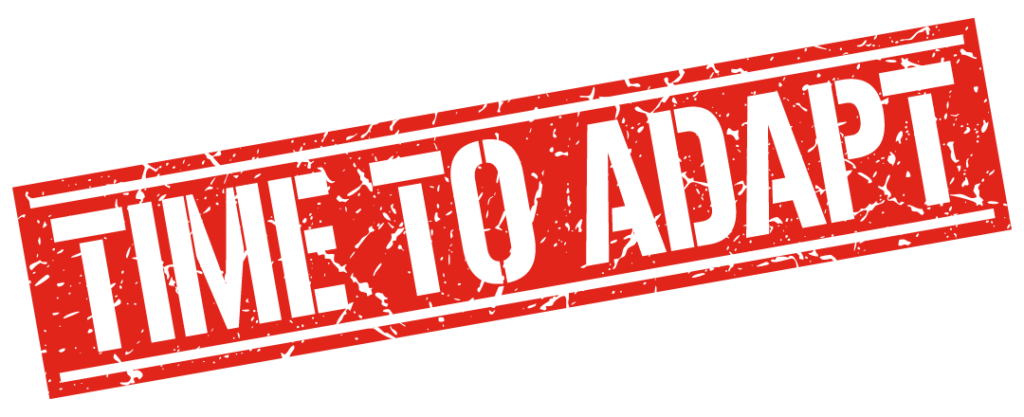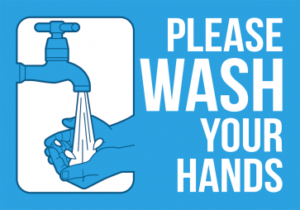
The Impact of COVID-19 for Advertisers
2020 has definitely introduced some curve balls to the advertising industry. On top of the political interference on advertising spend, especially for small and local businesses, the coronavirus (COVID-19) isn’t making it any easier for agencies and businesses to find a sense of normalcy in their media plans. Before we get into how coronavirus has shaped advertising thus far, and projections on how this may evolve and what we can do to still be successful during the ongoing crisis, we should take a dive into how industries have been affected thus far.

Covid-19 Industry Impact Thus Far
Airlines have seen a sharp decline in domestic travel, with international almost completely halted from temporary bans to contain further spread. DFW-based American Airlines will implement a phased suspension of additional long-haul international flights and anticipates its domestic capacity to reduce by at least 30% come April. United, JetBlue, Delta, Alaska Airlines have all updated their policies and schedules, including fare caps, fee waivers, refunds and reduced flight offerings. International Air Transport Association claims that airlines globally could lose up to $113 billion in revenue. VOX reiterates that this loss could disrupt the industry as significantly as the Great Recession.
The hospitality industry has likewise seen a sharp decline. Some restaurants are encouraging dine-in patrons by upping sanitation and spreading tables further apart, while others have strictly moved to takeout or delivery only or temporarily closed all together. Some states have set lowered max-occupancy numbers and others have been ordered to completely shut down. Hotels are reporting widespread cancellations and vacancies.
Brick and mortar retail have been experiencing the effects as well. While most shopping malls remain open at the time of this writing, brands are beginning to temporarily shutter all locations, from Nike and Apple to Urban Outfitters and Lululemon. With China as a large hub of operations for brands, an unstable terrain has quickly evolved. Sales, manufacturing, and logistics are included in the impact. Add in the decline of foot traffic, and luxury retail brands such as Burberry and Versace owner Capri Holdings, could see a $45 billion decline in sales. For e-commerce, sales may grow beyond 2020 projections amid Coronavirus fears.
Event-based and experiential marketing has clearly seen a dramatic decline after the widespread concern of coronavirus infection rates. The South by Southwest Festival, where people across the globe convene to celebrate interactive, film, and music industries, was cancelled for the first time in 40 years, with no sign of a reschedule this year. Coachella Valley Music and Arts Festival, originally set for April 10-12 and 17-19, was postponed to October of this year. The Boston Marathon was set for April 20th but will now take place in the fall as well.
Many activations at other events and gatherings have been cancelled. Large companies such as Facebook, Twitter, and Intel, can pull out without much business implication, but the small brands and companies that rely on these events, are left at a loss. By March 15, the CDC said that all gatherings of 50+ persons, from weddings to religious services to concerts, should be cancelled.
Add to this nationwide to global professional athletics cancelled or pushed back practically overnight, a large portion of broadcast advertising will be forced to shift to a different schedule.

The Impact on Advertising and Next Steps
There are certainly unprecedented events occurring within the world of advertising in 2020. The biggest issue is how individual brands react to something so fluid. Drastic changes, however, call for creative solutions.
Obviously, there is extreme concern for the safety of employees, customers, and community leaders, and the effects of the outbreak are evident. A week ago, organizations across all industries were teetering on a ledge of uncertainty, waiting to see how this will play out in order to take next steps. Now, many are more certain.
Several companies already have either pushed back campaign launch dates, reallocated spend to other channels, or pulled their campaigns altogether. Organizations that have been hit the hardest thus far fall into the airline, hospitality, and event industries. Spending in these large sectors of the economy has started to slow at alarming rates, which is worrying for everyone.
One fundamental truth has become even more important during this ambiguous time. Advertisers and companies should strive to meet their consumers on their preferred channels. As people begin to work from home or have shorter hours at their jobs, streaming and other online services will be crucial to incorporate into media plans instead of outdoor and print channels.

Many brick and mortar businesses are transferring to a largely digital presence, including increased e-commerce for shipping or pick up orders and deliveries. The strain that limited person-to-person contact is having on brick and mortar businesses has created a need for digital communication like never before.
For experiential, there has been an immediate struggle, since this industry has historically required and encouraged close person-to-person contact and interaction. As events get cancelled and push to summer and fall, many brands and their agency partners are rapid-fire planning how they can transfer their offering to the digital space and supplement during this time. This includes strategizing proactive planning for now and the future, such as how to transfer these experiences to be had virtually in the form of testing virtual events. Texas Tribune, for example, whom frequently hosts live in-person events, is creating a virtual events series through livestreams to hear from and engage with policymakers and newsmakers.
Indeed, it’s not as simple as just taking a multi-day conference or event and putting it online, but those that already have a digital presence and quickly choose to emphasize it, are most likely to offset a portion of any in-person losses.
Home service industries are still pacing along during this time. People are still willing to have techs come to their homes and assist with a fix or installation, especially as people spend more time in that home. While Broadcast may be rescheduled for this industry temporarily, a digital presence is still crucial to be present as people need to make those phone calls.

The country is paying very close attention to news, reports, and insights of all kinds, which can be beneficial for digital media plans and broadcast. When more people are spending time at home, video consumption and overall digital use spikes. This signals that, in the interim, focus should be shifted here. Thanks to our partners at WFAA, we know that broadcast viewership is up in the daytime and early and late news segments as people hunker down. Stations are seeing a spike in entertainment programming as viewers need a little levity to balance the news content.
More than ever, it’s important for brands to sustain and grow their digital presence to engage, whether it’s the social media manager interacting with their community or expanding the brand experience through interactive and live digital mediums.
With the increase in traffic to digital platforms like OTT streaming and news sites that report on the coronavirus, advertisers should give more thought to their keywords in relation to what is top of mind for consumers. Sites that actively track the coronavirus outbreak have already seen a spike in traffic, but any advertising that appears on these sites should be tailored to ensure positive brand engagement. Otherwise, keywords for related topics that aren’t as grim, such as meal prepping, should be considered.
For brands that are feeling uneasy about the impact, planners can entrust confidence through tactical spending plans. The best thing for any organization to do in uncertain situations is to keep lines of communication between brands, teams, and reps open and frequently utilized. Advertising teams should monitor the media changes closely so they can adjust plans accordingly, especially in a time that is more volatile than usual, in order to make decisions for businesses and their livelihood. These measures will help ensure the safety of everyone and find the best solution to this everchanging situation.

There’s Always Good News
As advertisers, we’re constantly looking for new, creative mediums and strategies to connect and provide effective messaging and experiences. This drastic flock to digital, and the solutions that come out of it, stand the chance to evolve multiple industries moving forward, to continue long after the threat has passed.
Market-wise, it’s possible that the virus will level off soon and the entire advertising market will bounce back in the second half of the year, eMarketer said. Similarly, Moody Corporation’s Senior VP Neil Begley claims that while we expect an epidemic in the US will cause contraction in advertising revenues, we expect it to normalize quickly after the threat passes.

And please, wash your damn hands.

